Canada is the second-largest country on the planet, filled with various natural wonders, making it one of the most beautiful places on earth. Included in the menagerie of natural wonders are numerous rivers, lakes, dams, and streams. While many people flock to Canada’s rivers in the summers for some much-needed relief from the hot temperatures, many of these rivers are dangerous due to their strong currents. Here are the fastest rivers in Canada by discharge.

Image: T.Schofield, Shutterstock
©T.Schofield/Shutterstock.com
The Concept Of River Discharge
The volume of water flowing through a river channel is called river discharge. It is measured in cubic meters per second at any given point. Low river discharge can have an impact on wildlife that rely on the ecosystem. Furthermore, in the most extreme cases, it can result in drought. However, high river discharge can result in severe flooding.

The volume of water flowing through a river channel is called river discharge. It is measured in cubic meters per second at any given point.
Image: Melnikov Dmitriy, Shutterstock
©Melnikov Dmitriy/Shutterstock.com
10 Fastest Rivers In Canada By Discharge
1. Saint Lawrence River
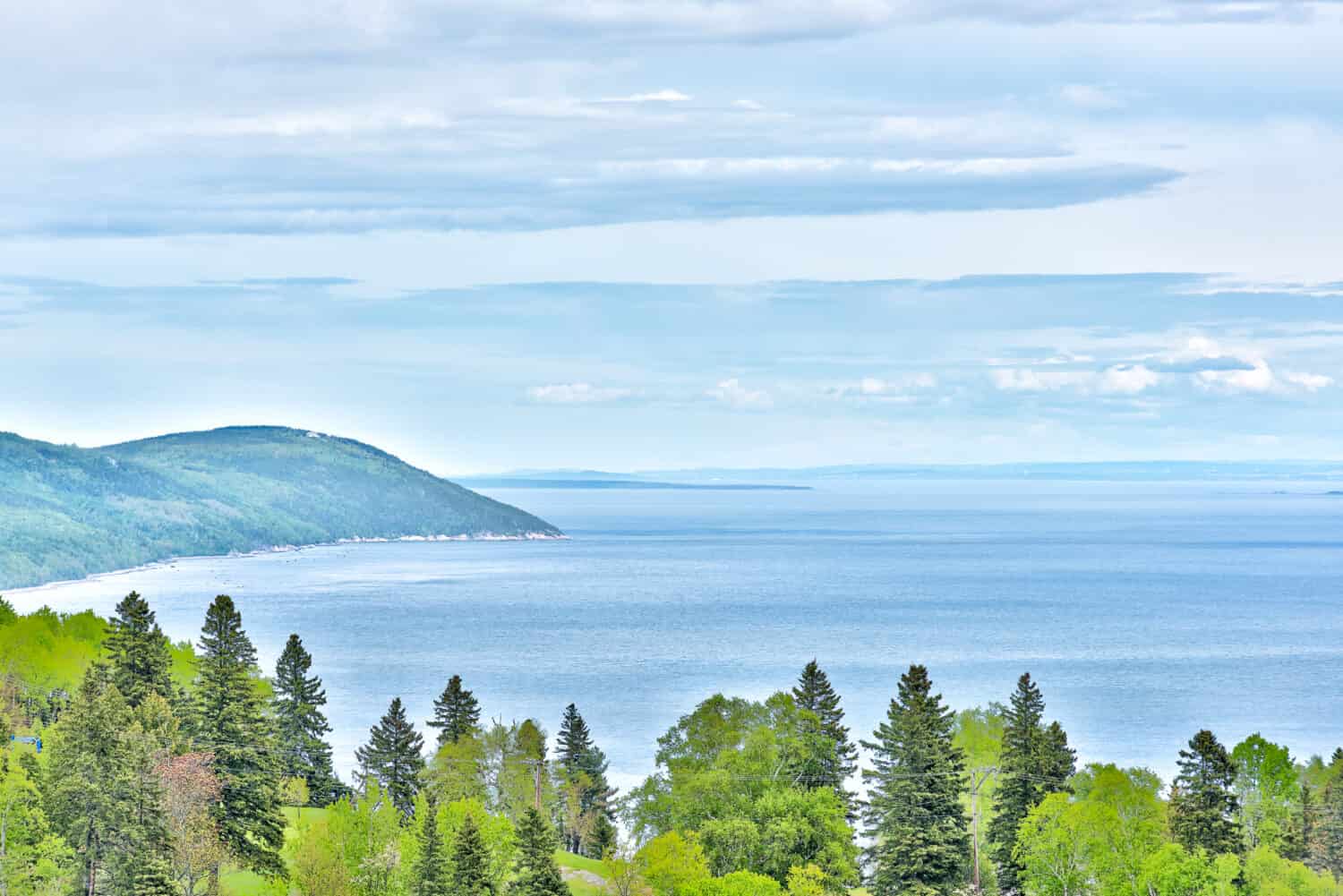
Image: Andriy Blokhin, Shutterstock
©Andriy Blokhin/Shutterstock.com
The Saint Lawrence River is the fastest river in Canada. Its average discharge is 16,800 m3/s (meters cubed per second). This river originates at the North River in Minnesota, flowing into Lake Superior, and ends in the Atlantic Ocean via Cabot State in the eastern region of Canada. While the Saint Lawrence River is only 750 miles long, it forms part of a larger system originating in the United States. When combined, this river covers around 2,500 miles.
2. Mackenzie River

The Mackenzie River flows northwest from Great Slave Lake to the Beaufort Sea. It is the largest river in Canada, spanning 2,635 miles.
Image: Pi-Lens, Shutterstock
©Pi-Lens/Shutterstock.com
The Mackenzie River flows northwest from Great Slave Lake to the Beaufort Sea. It is the largest river in Canada, spanning 2,635 miles. Furthermore, it is the second fastest river in Canada, with an average discharge of 10,338 m3/s. The Mackenzie River’s peak discharge occurs in June. However, its flow is typically uniform because of the many large lakes in the system and the flat topography east of the river.
3. Columbia River
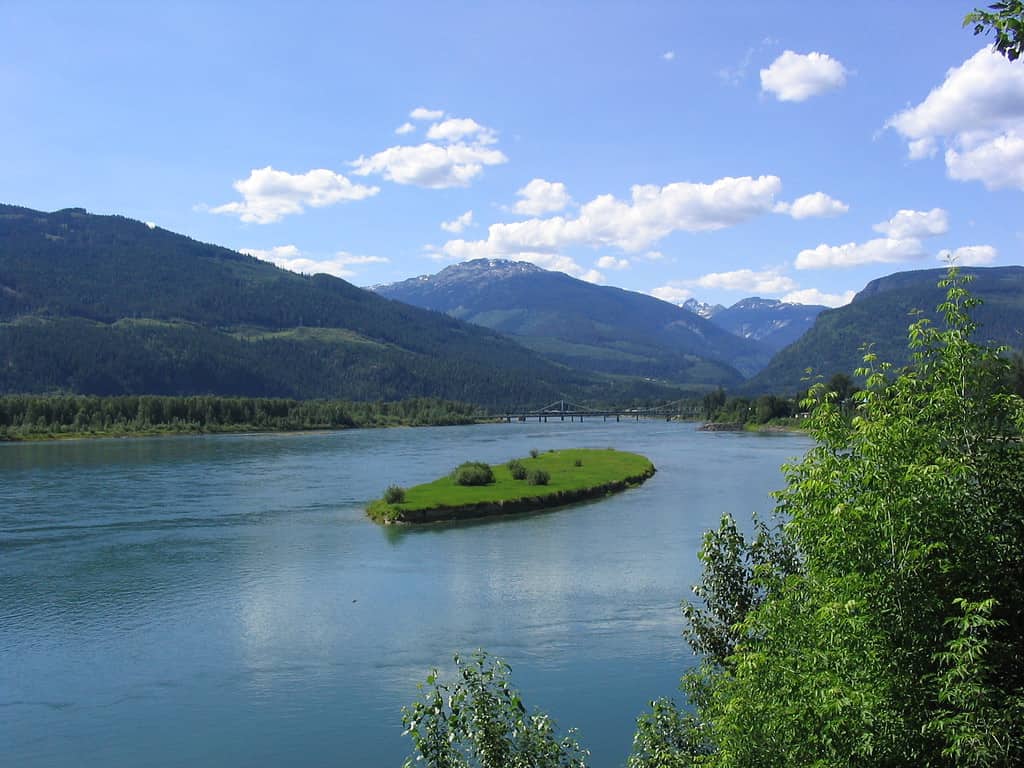
The Columbia River is one of the fastest rivers in Canada, as it has a discharge of 7,504 m3/s. This river runs from British Columbia through the United States (Washington and Oregon) to the Pacific Ocean.
The Columbia River is one of the fastest rivers in Canada, as it has a discharge of 7,504 m3/s. This river runs from the province of British Columbia through the United States (Washington and Oregon) to the Pacific Ocean. This river’s drainage basin is one of the biggest in North America. Furthermore, the dams along its Canadian segment generate about half of British Columbia’s hydroelectricity. This river is long and powerful. For example, it is around 1,243 miles long, of which 498 miles are in Canada.
4. Yukon River
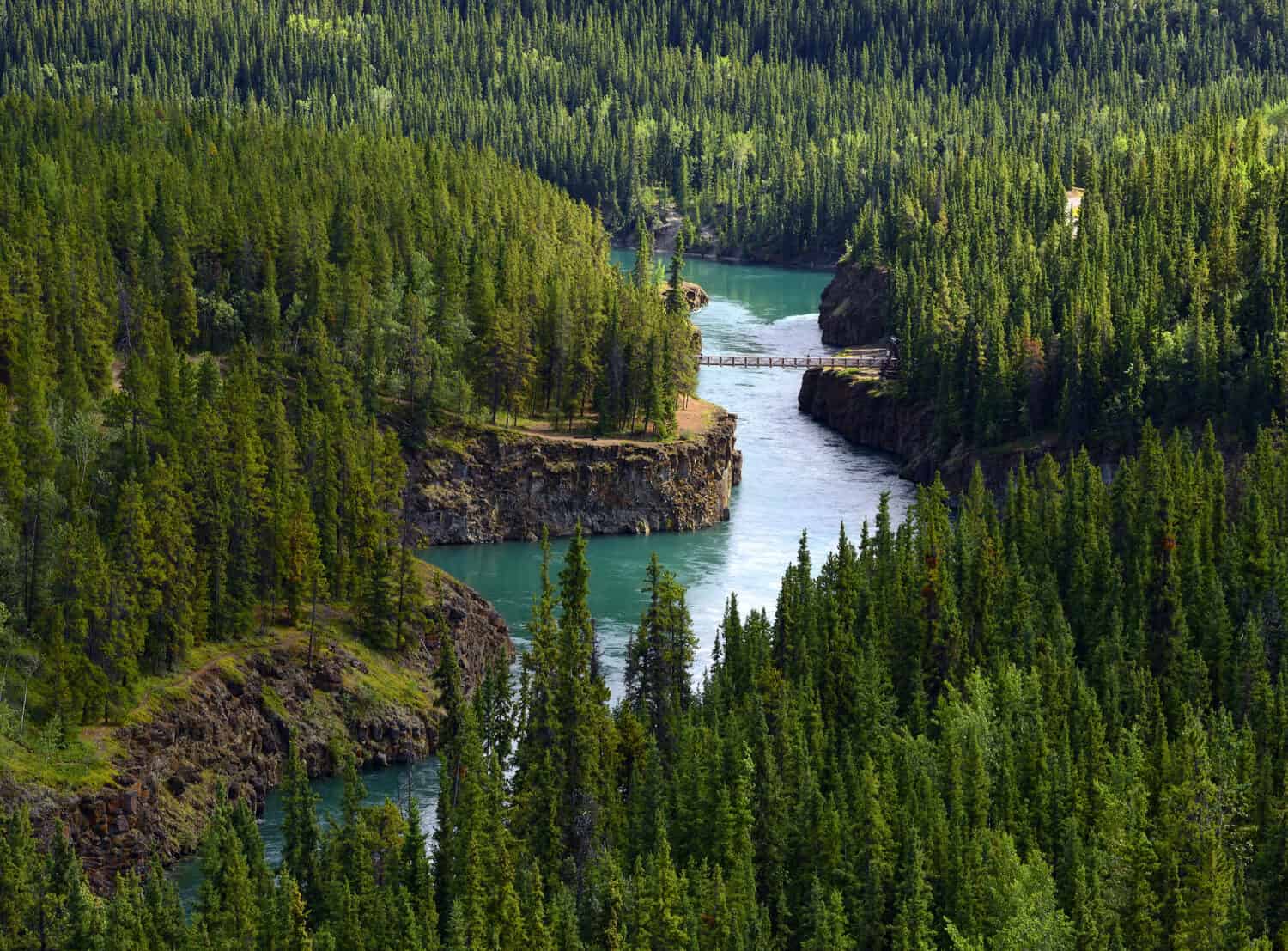
The Yukon River is one of the longest rivers in Canada, spanning over 1979 miles, of which 714 miles flow through Canada.
Image: Pecold, Shutterstock
©Pecold/Shutterstock.com
The Yukon River is one of the longest rivers in Canada, spanning over 1979 miles, of which 714 miles flow through Canada. It originates in the northwest corner of British Columbia and flows north into Alaska and then west to Norton Sound on the Bering Sea. Furthermore, the Yukon River has a discharge of 6,800 m3/s, making it one of the fastest-flowing rivers in Canada.
5. Niagara River

The Niagara River has a discharge of 5,885 m
3/s. In addition, this river is used by many people in both the USA and Canada, servicing more than a million residents for various purposes.
Image: Sarah Meagan, Shutterstock
©Sarah Meagan/Shutterstock.com
The Niagara River is 36 miles long. It originates at Lake Erie and flows to Lake Ontario, the St. Lawrence River, and finally ends at the Atlantic Ocean. The Niagara River has a discharge of 5,885 m3/s. In addition, this river is used by many people in both the USA and Canada, servicing more than a million residents for various purposes, like:
- Recreation
- Drinking water
- Industrial Cooling water supply
- Fishing
- Receiver of industrial and municipal effluents
- Hydro-power generation
6. St. Clair River
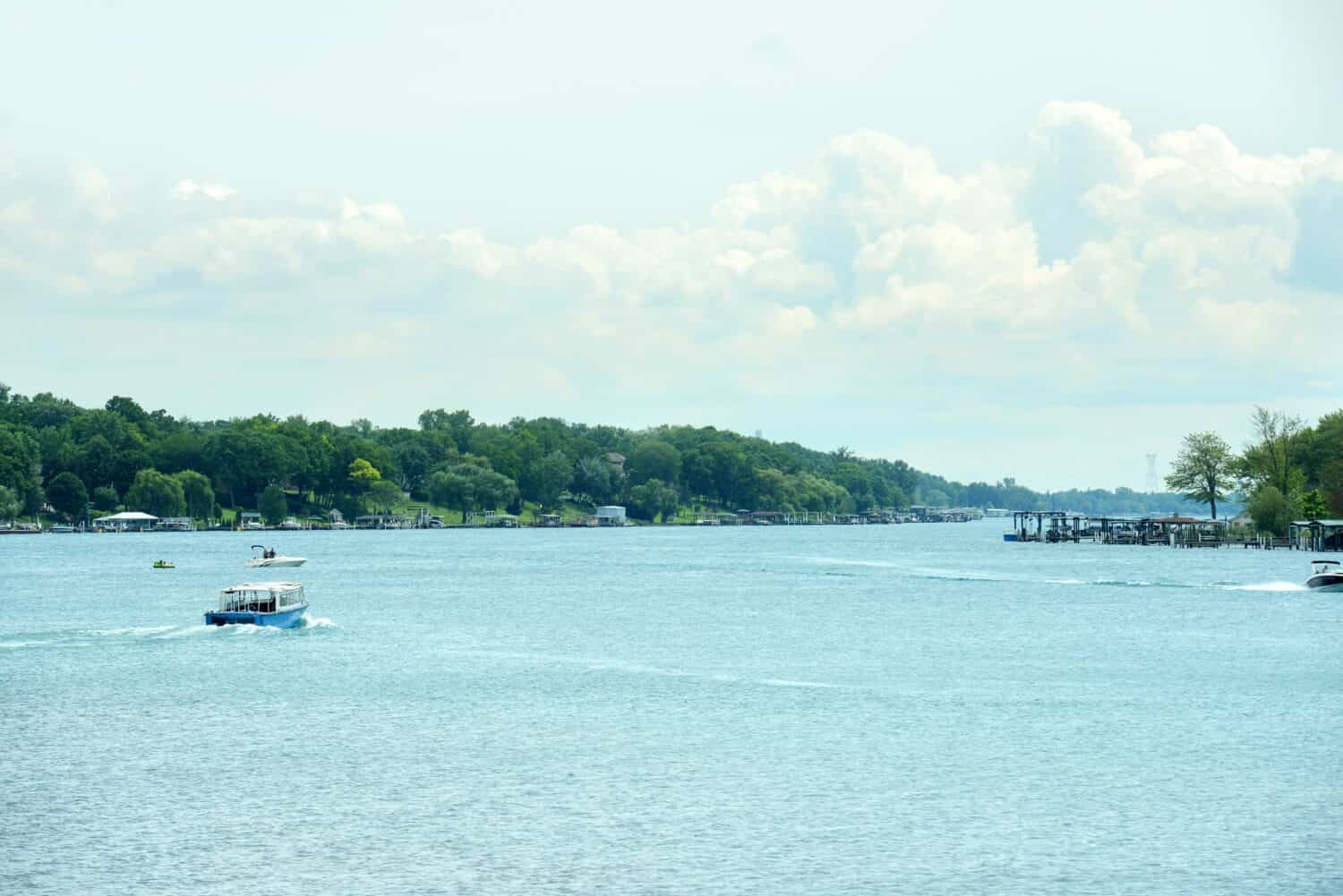
The St. Clair River originates in Port Huron and spans over 44 miles in a southern direction, joining the freshwater delta of Harsens Island in Lake St. Clair.
Image: Michael C. Gray, Shutterstock
©Michael C. Gray/Shutterstock.com
The St. Clair River originates in Port Huron and spans over 44 miles in a southern direction, joining the freshwater delta of Harsens Island in Lake St. Clair. It has an average discharge of 5,200 m3/s and forms a connecting channel between Lake Erie and Lake Huron, the international border between the USA and Canada.
7. Fraser River
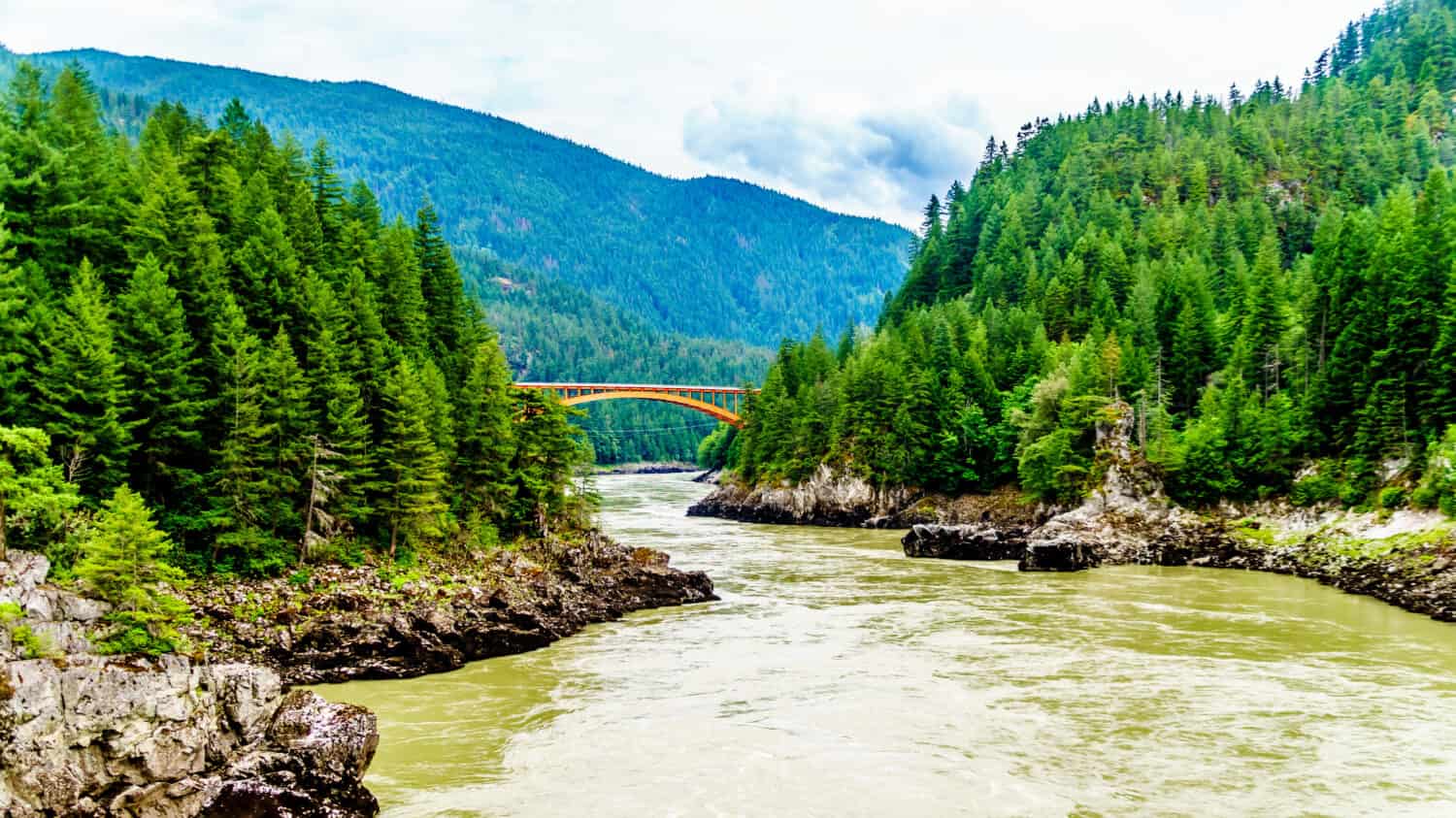
The Fraser River was named after a famous explorer, Simon Fraser. Furthermore, this river was an essential travel route and source of food for the area’s indigenous people long before the renowned explorer stumbled upon its waters.
Image: Harry Beugelink, Shutterstock
©Harry Beugelink/Shutterstock.com
This river is the longest in British Columbia, covering 854 miles. It originates at Mount Robson Provincial Park on the western side of the Rocky Mountains and ends in the Strait of Georgia in Vancouver. In addition, it is one of the fastest rivers in Canada, with a discharge of 3,475 m3/s. The Fraser River was named after a famous explorer, Simon Fraser. Furthermore, this river was an essential travel route and source of food for the area’s indigenous people long before the renowned explorer stumbled upon its waters.
8. Koksoak River
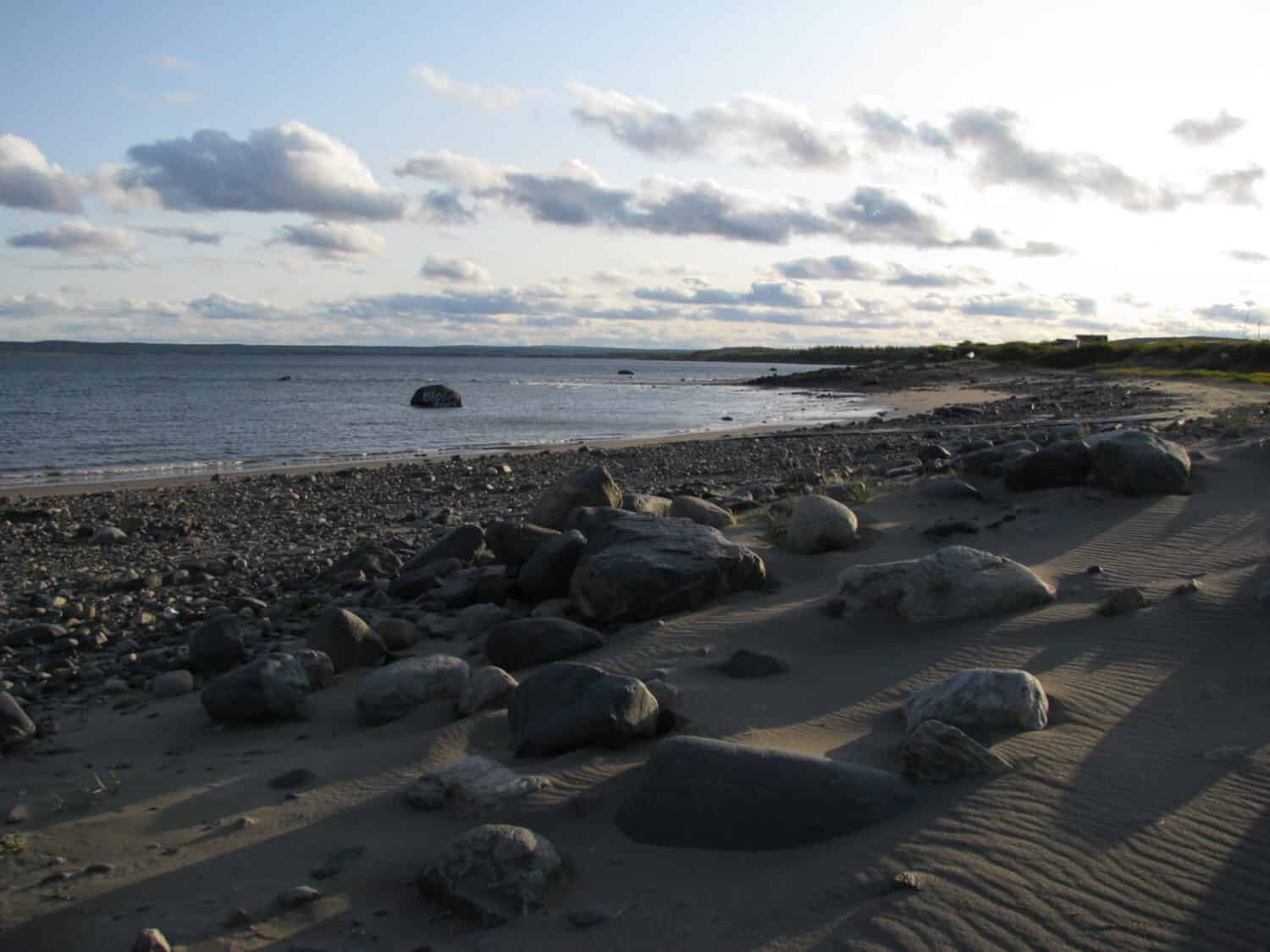
The Koksoak River is one of the fastest rivers in Canada, with a discharge of 2,800 m
3/s.
Image: Angelique clic, Shutterstock
©Angelique clic/Shutterstock.com
The Mélèzes and Caniapiscau join to form the Koksoak, flowing 90 miles north past Kuujuak to Ungava Bay. Its name translates to “big river” since its mouth is over 1600 miles wide. Additionally, the Koksoak River is one of the fastest rivers in Canada, with a discharge of 2,800 m3/s.
9. Liard River
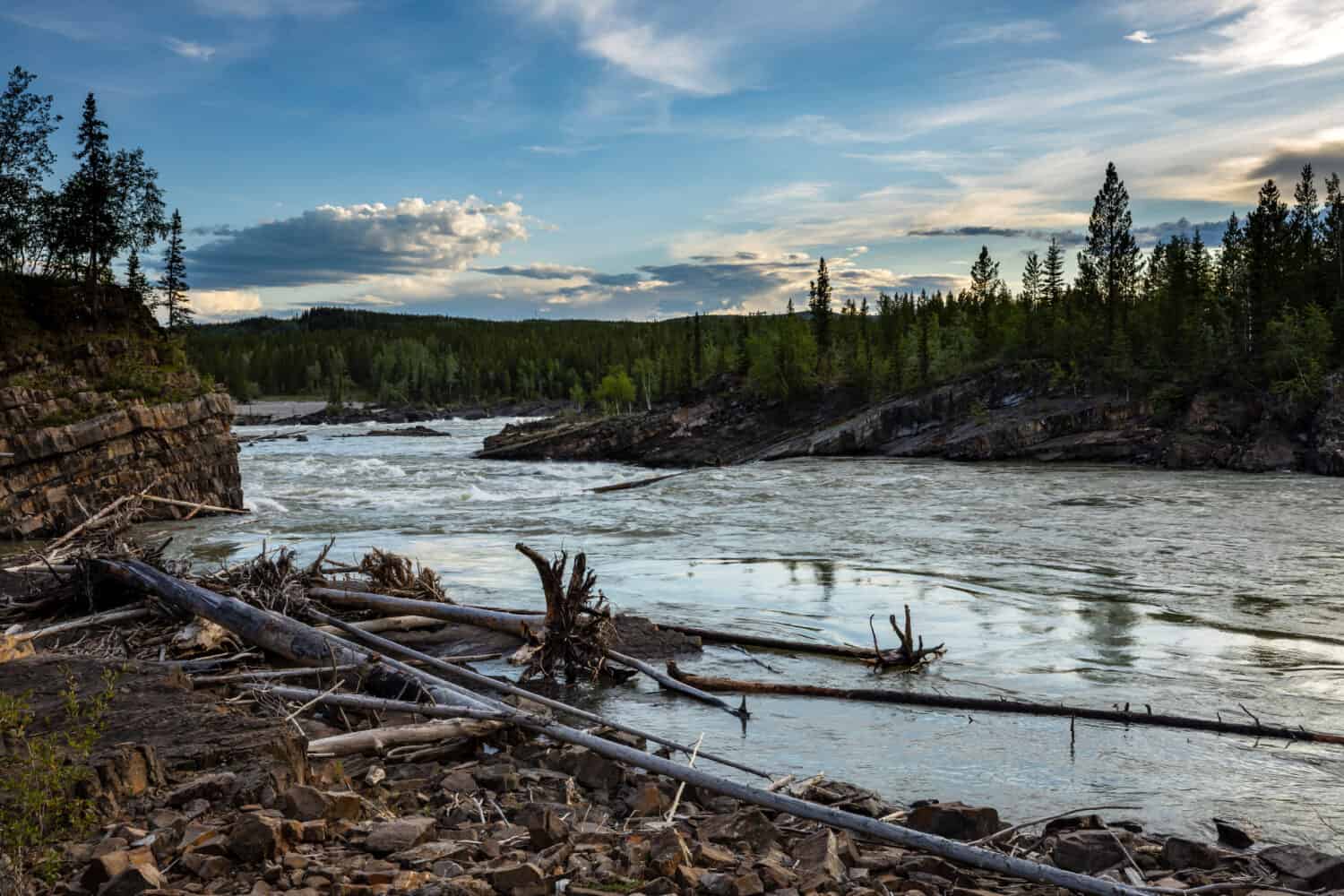
If you visit the Liard River, be cautious of the upper region as it is wild and treacherous, with multiple rapids and canyons.
Image: hecke61, Shutterstock
©hecke61/Shutterstock.com
This river originates in the Pelly Mountains of southeastern Yukon and flows through the Western Cordillera’s steep mountain terrain through northeastern BC. If you visit the Liard River, be cautious of the upper region as it is wild and treacherous, with multiple rapids and canyons. Its tributaries include the Hyland, Dease, Coal, Kechika, Toad, and Trout Rivers. This river has a discharge of 1,434 m3/s.
10. Nelson River
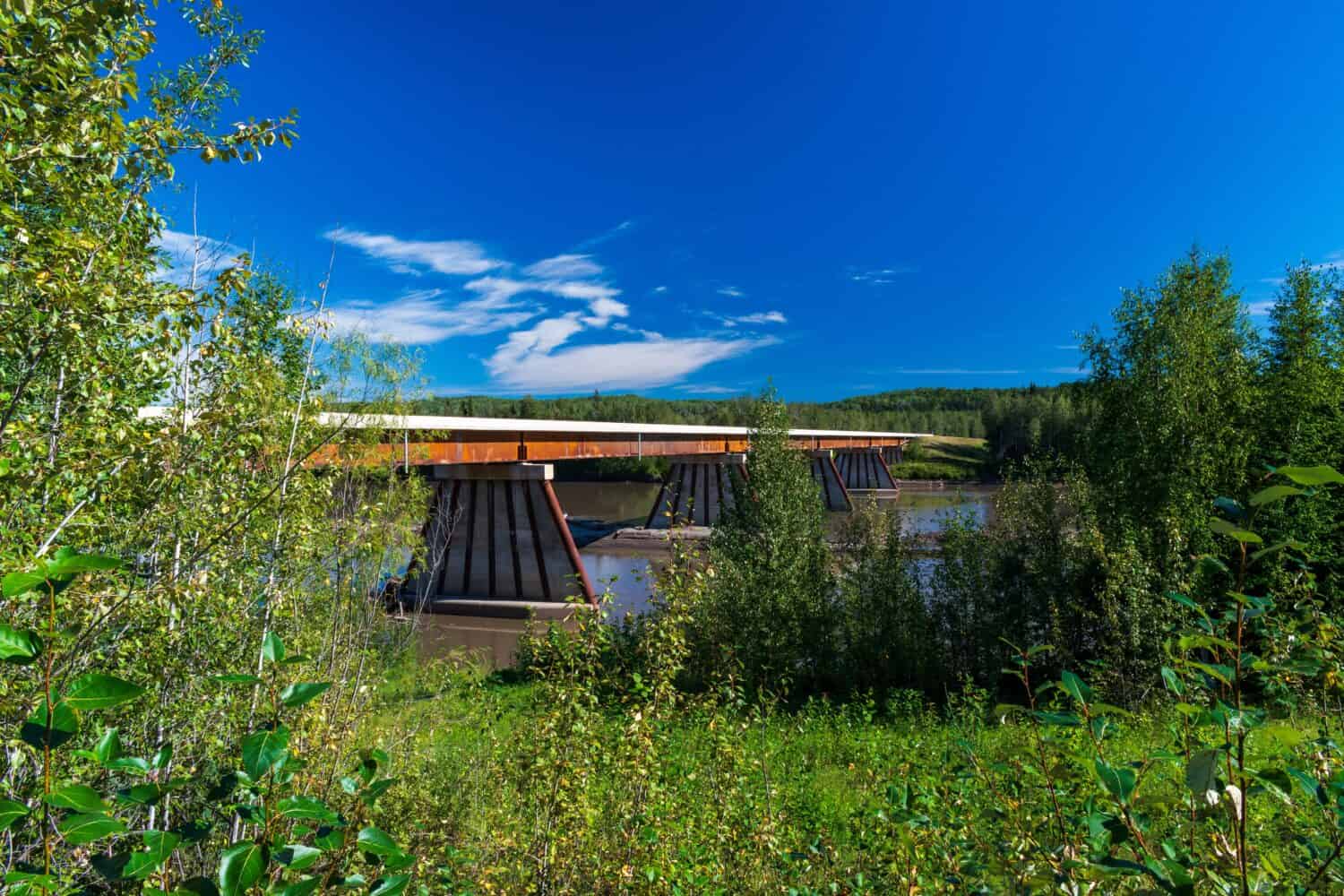
Nelson River’s main tributaries are Burntwood River, on which Manitoba, Thompson is located, and the Grass River. Furthermore, this river has a discharge of 2,370 m
3/s.
Image: T.Schofield, Shutterstock
©T.Schofield/Shutterstock.com
The Nelson River is 1600 miles long, flowing out of Playgreen Lake at the top of Lake Winnipeg. It flows into several lakes, including Split, Cross, Sipiwesk, and Stevens. Furthermore, it flows east from Stevens Lake into the Hudson Bay. Nelson River’s main tributaries are Burntwood River, on which Manitoba, Thompson is located, and the Grass River. Furthermore, this river has a discharge of 2,370 m3/s.
Summary of the Fastest Rivers in Canada by Discharge
| River | Average Discharge by m3/s |
|---|---|
| Saint Lawrence River | 16,800 |
| Mackenzie River | 10,338 |
| Columbia River | 7,504 |
| Yukon River | 6,800 |
| Niagara River | 5,885 |
| St. Clair River | 5,200 |
The photo featured at the top of this post is © R.M. Nunes/Shutterstock.com
Thank you for reading! Have some feedback for us? Contact the AZ Animals editorial team.







